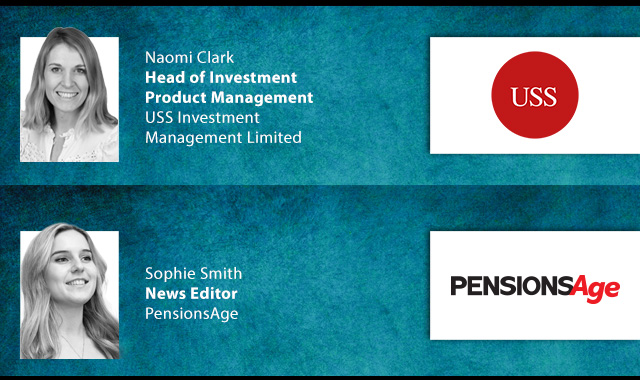Invesco Perpetual fund manager Richard Batty explores some of the ways in which multi-asset investing can exploit the rich seam of opportunities in today’s challenging financial markets
We see the investment landscape as having changed significantly in recent years, which has important implications for investment strategy. In particular we would highlight the emergence of four key themes for investors post the financial crisis.
First, bonds have been overwhelmingly favoured as an asset class in recent years. Globally, data from EPFR show 60 per cent of cumulative fund flows by institutional investors since 2003 have been into bondsi. This has reflected the broad-based ‘hunt for yield’ as investors have sought the higher yield of corporate bonds, emerging market bonds and equities.
Second, in the aftermath of the financial crisis, economic growth has remained sluggish and inflation contained – even after the massive amounts of quantitative easing (QE). It is hard to see that easy stance of policy being removed at all quickly if, as we expect, these economic conditions remain key themes for an extended period.
Third, since QE policies were introduced by central banks around the world from 2008 onwards, financial markets have become particularly sensitive to announcements with regard to changes in monetary policy.
Fourth, these changing circumstances have been reflected in changing correlations across assets. In that respect, we identify three broad phases in global markets since the 1990s.
From 1990 to 2000, the general trend was that bond and equity markets rose together. This was a period of a trend decline in inflation, interest rates and bond yields and more stable economic growth than in the past. That environment benefitted bonds and equities alike.
From 2001 to 2011, we saw ‘risk-on/risk-off’ shifts. During ‘risk on’ periods, there was a higher demand for equities and their prices rose at the same time as bond prices tended to fall; and vice versa in ‘risk off’ periods. So, for much of the time there was a negative correlation between the returns on equities and bonds.
Since the start of 2012, we have seen relatively high positive correlations between bonds and equities again. This positive correlation has been indicative of the importance of economic policy decisions for all asset markets: further QE stimulus has pushed up bonds and equities together; the threat of its withdrawal has seen both assets suffer.
Expanding the scope of investment
In such circumstances, we see merit in expanding the scope of investment beyond standard asset classes. Using a wider range of asset types can help in implementing ideas about the direction of economies and financial markets. Three examples illustrate this theme.
1. Currency-equity market relationships
Currency markets can be useful in providing diversification. The Canadian dollar, for example, has typically strengthened against the US dollar as the US equity market has rallied. This is partly because both tend to benefit from stronger global economic growth, not least because Canada tends to benefit from stronger commodity prices. Conversely, as global growth has slowed in recent months, the Canadian dollar has tended to weaken against the US dollar.
2. Volatility as an alternative source of returns
Volatility itself can be seen as an alternative source of returns. In May and June 2013 when almost all financial assets fell in value, volatility increased and it was the only major source to give a positive return in that period. Volatility is particularly interesting for diversification purposes because when equity markets rise, they tend to rise steadily and volatility is low; but when they fall, they fall sharply, and volatility tends to spike higher.
3. Taking pinpointed sector exposure across markets
A view, based on an assessment of economic and financial developments of a particular sector of the economy, can be implemented by taking a relative position across markets and asset types.
For example, in recent years, a view that the European bank sector would survive could be implemented by favouring investment in bank credit (which would likely benefit from measures to strengthen bank balance sheets) whilst remaining concerned about the value of bank equity (as profitability would likely be limited as increasing capital requirements would force the scaling back of new lending).
In a similar vein, a view on the relative competitiveness of different companies in an industry can be expressed by taking offsetting ‘long’ and ‘short’ positions.
Conclusions
Financial markets are dynamic and constantly changing. Monetary policy, in particular, is currently playing an important role in driving asset prices, and investors are lacking some important cyclical triggers for making asset allocation decisions. In this environment, sourcing investment ideas from a broader range of assets can help navigate these changing market conditions.
Written by Richard Batty, Invesco Perpetual Fund Manager
Latest News
-
Industry welcomes plans to extend CDC; warns about governance requirements
-
TPO orders company director to repay £9.7m following PDU investigation
-
Govt to share response to WPC DB pension report in the new year
-
Aviva launches Shariah investment strategy
-
PRAG shares updated guidance following industry feedback
-
Research reveals UK 'job hoppers' save £15,000 into pensions
A time for fixed income
Francesca Fabrizi discusses fixed income trends and opportunities with Goldman Sachs Asset Management Head of UK Pensions Solutions, Fixed Income Portfolio Management, Henry Hughes, in our Pensions Age video interview
Purposeful run-on
Laura Blows discusses purposeful run-on for DB schemes with Isio director, actuarial and consulting, Matt Brown, in Pensions Age’s latest video interview
Find out more about Purposeful Run On
Find out more about Purposeful Run On
Keeping on track

In the latest Pensions Age podcast, Sophie Smith talks to Pensions Dashboards Programme (PDP) principal, Chris Curry, about the latest pensions dashboards developments, and the work still needed to stay on track
Building investments in a DC world

In the latest Pensions Age podcast, Sophie Smith talks to USS Investment Management’s head of investment product management, Naomi Clark, about the USS’ DC investments and its journey into private markets
© 2019 Perspective Publishing Privacy & Cookies











Recent Stories